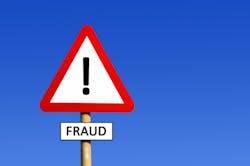American Greed is a business-reality program on CNBC that focuses on the stories behind some of the high-profile corporate and white-collar crimes in recent US history. Most of us know the 2008 story of Bernie Madoff, who had committed a Ponzi scheme fraud estimated to be $64.8 billion.
More recently in 2017, “businessman Seth Gillman was sentenced to six and a half years in federal prison for masterminding a $20 million hospice care fraud scheme that exploited some of Illinois' most vulnerable residents.”1
These stories can seem remote to most dental hygienists. We are caring, ethical, and honest. We would never knowingly perpetrate any type of dental fraud, abuse, or scam.
At this same time, patients, and possibly coworkers, may ask if codes can be alternated, treatment dates changed, and more all to increase dental benefit coverage. This is more than an ethical dilemma.
The most accurate code
As professionals, our coding role is to use the most accurate code to describe the procedure performed. Coding for what you do is a fundamental rule for all coding.
Many practices have experienced a third-party payer remapping (down-coding) their submissions. This can lead practices and people to the belief that codes can be used based on a plan’s coverage.
Treatment should be based on clinical need, not on covered services. Changing a code for the purpose of increasing payment by using an either higher or lower level code can be considered fraud (for example, using D1110 instead of D4346).
Fraud by accident or ignorance is still fraud.
D4346, D4355, D6081 changes create confusion
Recent changes in CDT codes, such as new codes D4346 and D6081 and the revised D4355, have created many questions and lot of confusion. Then there is that old question of alternating codes D1110 and D4910. The decisions made, whether the hygienist knows what is submitted or not, can readily lead to fraud—by accident or ignorance.
Flow charts help make complex, detailed choices easier follow. Most perio disease flow charts make little mention of gingival disease. Most flow charts also do not include coding for implant care.
On June 21, 2018, the American Academy of Periodontology (AAP) published Classification of Periodontal and Peri-Implant Diseases and Conditions 2017. These updates include staging and grading system for health, gingival disease, periodontitis and classifications of peri-implant disease.
This was just in time to bring to Patti DiGangi’s RDH Under One Roof general session, Insurance Fraud by Accident or Ignorance. It was also just in time to be part of Patti’s book CDT 2018 Shifts Metrics Driven including her 2018 Perio Protocols Flow Chart.
Coding, lifelong learning and training
The CDT codes change for many reasons, including the introduction of technology, materials, or techniques that have led to new procedures. Codes are updated annually with new, revised, and deleted codes.
Practice management software is also updated annually, but may not include the entire CDT code entries. This could lead to mistakes, errors in understanding, and inappropriate and even fraudulent coding.
None of us want to be a Bernie Madoff or Seth Gillman. Yet insurance fraud can happen—by accident or ignorance.
Reference
1. Jackson D, Marx G. Hospice CEO gets 6 1/2 years for fraud scheme. Chicago Tribune website. http://www.chicagotribune.com/news/ct-hospice-executive-sentenced-met-20170307-story.html. Published March 7, 2017.
Patti DiGangi, BS, RDH, is an international speaker who is passionate about prevention and working with dental professionals to improve practice profitability. Patti is the author of the DentalCodeology book series for busy dental professionals. She recently published Teledentistry: Pathway to Prosperity - A Critical Decisions Workbook co-authored by Cindy Purdy, RDH, BS.







